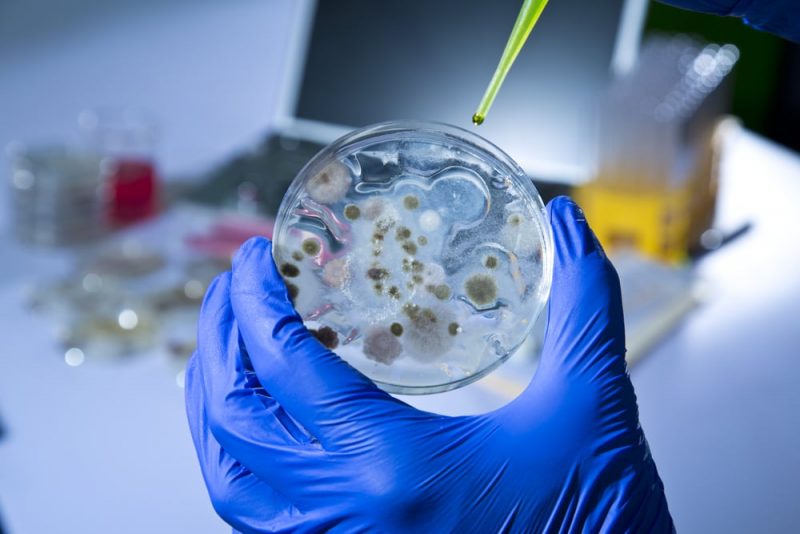A organism (also called living being) is a complex organization of molecular communication systems. These systems establish various internal relationships (within the organism) and external (the organism with its environment) that allow an exchange of matter and energy.
Every organism performs the basic vital functions: nutrition, relationship and reproduction.
Depending on the way they perform their nutrition, organisms can be autotrophic or heterotrophic.
- Heterotrophic organisms. They feed on organic substances that come from other organisms. For instance: fungi, fish, mice.
- Autotrophic organisms. They produce their organic matter from inorganic substances (mainly carbon dioxide) and energy sources such as light. In other words, they do not need other living beings for their nutrition. For instance: cyanobacteria, grass, hydrangeas.
Types of autotrophic organisms
Autotrophic organisms can be:
- Photosynthetics. They are plants, algae and some bacteria that use light to transform inorganic matter found in the environment into internal organic matter. Through photosynthesis, sunlight is stored in the form of organic molecules, mainly glucose. Photosynthesis takes place mainly in the leaves of plants, thanks to chloroplasts (cellular organelles that contain chlorophyll). The process by which carbon dioxide is used to create organic compounds is called the Calvin cycle.
- Chemosynthetics. Bacteria that make their food from substances that contain iron, hydrogen, sulfur and nitrogen. They do not require light to carry out the oxidation of these inorganic substances.
The autotrophic organisms They are essential for the development of life, since they are the only ones that can create, from inorganic substances, the organic substances that will serve as food for all other living beings, including human beings. They were the first living beings on the planet.
Examples of autotrophic organisms

- Colorless sulfur bacteria (chemosynthetics). They transform the H2S that is abundant in wastewater to turn it into their food.
- Nitrogen bacteria (chemosynthetics). They oxidize ammonia to transform it into nitrates.
- Iron bacteria (chemosynthetics). Through oxidation, they convert ferrous compounds to ferric compounds.
- Hydrogen bacteria (chemosynthetics). They use molecular hydrogen.
- Cyanobacteria (photosynthetic). The only prokaryotic organisms capable of oxygenic photosynthesis. It was believed that they were algae, until discovering the differences between prokaryotic cells (without a cell nucleus) and eukaryotic cells (with a cell nucleus differentiated by a membrane). They use carbon dioxide as a carbon source.
- Rhodophic (red algae) (photosynthetic). Between 5000 and 6000 species. They can be classified as plants or protists, depending on the criteria used. Although they contain chlorophyll a, they also have other pigments that hide the green color of chlorophyll, and distinguish them from other algae. They are mainly found in deep water.
- Ochromonas (photosynthetic). Single-celled algae belonging to the golden algae (Chrysophyta). Thanks to their flagella they can move.
- Parsley (photosynthetic). Herbaceous plant that has been cultivated for more than 300 years to be used as a condiment. It reaches 15 centimeters in height. However, it has flowery stems that can exceed 60 centimeters.
- Sessile oak (quercus petraea) (photosynthetic). Frond tree of the Fagaceae family. They have acorns that mature in six months. It has leaves with rounded lobes, where chlorophyll is found.
- Daisy flower (photosynthetic). Its scientific name is asteraceous, it is an angiosperm plant. It is characterized by its flowers. Its leaves, where photosynthesis occurs, are usually compound, alternate, and spiral.
- Grass (photosynthetic). Also called grass or grass. There are several species of grasses that grow in a dense canopy. They are used in gardens but also on various sports fields.
- Hydrangea (photosynthetic). Thicket of flowers that form large clusters of blue, pink or white colors depending on the acidity of the soil.
- Laurel (photosynthetic). Evergreen tree or shrub (which remains green in all seasons). Its leaves, where chlorophyll is found and photosynthesis occurs, are used as a condiment.
- Diatom (photosynthetic). Photosynthesizing unicellular algae that are part of plankton. They exist as colonies that form filaments, ribbons, fans, or stars. They are distinguished from other algae because the entire organism is surrounded by a single cell wall that contains opaline silica. This membrane is called a frustule.
- Xanthophyceae. Green-yellow algae (photosynthetic). They live mainly in fresh water and also on the ground, although there are also marine species. Chloroplasts, which participate in photosynthesis, give them their characteristic color.
